Discover 11 hidden attractions, cool sights, and unusual things to do in King's Lynn (United Kingdom). Don't miss out on these must-see attractions: Sandringham House, Castle Rising, and Guildhall of St George. Also, be sure to include King's Lynn Minster in your itinerary.
Below, you can find the list of the most amazing places you should visit in King's Lynn (England).
Table of Contents
Sandringham House
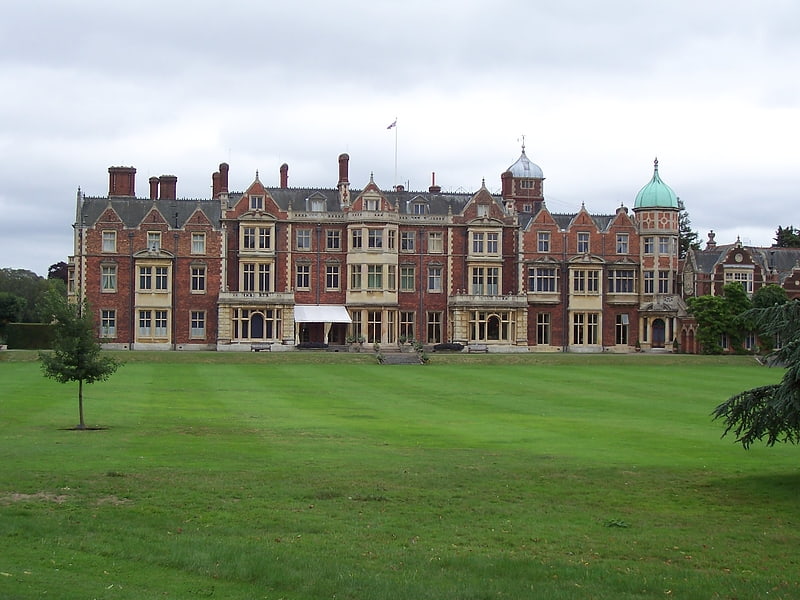
Royal family-owned country estate. Sandringham House is a country house in the parish of Sandringham, Norfolk, England. It is one of the royal residences of Elizabeth II, whose father, George VI, and grandfather, George V, both died there. The house stands in a 20,000-acre estate in the Norfolk Coast Area of Outstanding Natural Beauty. The house is listed as Grade II* and the landscaped gardens, park and woodlands are on the National Register of Historic Parks and Gardens.
The site has been occupied since Elizabethan times, when a large manor house was constructed. This was replaced in 1771 by a Georgian mansion for the owners, the Hoste Henleys. In 1836 Sandringham was bought by John Motteux, a London merchant, who already owned property in Norfolk and Surrey. Motteux had no direct heir, and on his death in 1843, his entire estate was left to Charles Spencer Cowper, the son of Motteux's close friend Emily Temple, Viscountess Palmerston. Cowper sold the Norfolk and the Surrey estates and embarked on rebuilding at Sandringham. He led an extravagant life, and by the early 1860s, the estate was mortgaged and he and his wife spent most of their time on the Continent.
In 1862, William Cowper, later created Lord Mount Temple, sold Sandringham and just under 8,000 acres of land to Albert Edward, Prince of Wales, later King Edward VII, as a country home for him and his future wife, Princess Alexandra of Denmark. The price paid was £220,000, which came from the revenues of the Duchy of Cornwall which had accrued to the Prince while he was under-age. Between 1870 and 1900, the house was almost completely rebuilt in a style described by Pevsner as "frenetic Jacobean". Albert Edward also developed the estate, creating one of the finest shoots in England. Following his death in 1910, the estate passed to Edward's son and heir, George V, who described the house as "dear old Sandringham, the place I love better than anywhere else in the world". It was the setting for the first Christmas broadcast in 1932. George died at the house on 20 January 1936. The estate passed to his son Edward VIII and, at his abdication, as the private property of the monarch, it was purchased by Edward's brother, George VI. George was as devoted to the house as his father, writing to his mother Queen Mary, "I have always been so happy here and I love the place". He died at Sandringham on 6 February 1952.
On the King's death, Sandringham passed to his daughter Elizabeth II. The Queen spends about two months each winter on the Sandringham Estate, including the anniversary of her father's death and of her own accession in early February. In 1957, she broadcast her first televised Christmas message from Sandringham. In the 1960s, plans were drawn up to demolish the house and replace it with a modern building, but these were not carried out. In 1977, for her Silver Jubilee, the Queen opened the house and grounds to the public for the first time. In early February 2022 the Queen stayed at the house to mark her accession to the throne and her Platinum Jubilee. Unlike the royal palaces owned by the Crown, such as Buckingham Palace and Windsor Castle, Sandringham is owned personally by the Queen.[1]
Castle Rising

Castle in England. Castle Rising is a ruined medieval fortification in the village of Castle Rising, Norfolk, England. It was built soon after 1138 by William d'Aubigny II, who had risen through the ranks of the Anglo-Norman nobility to become the Earl of Arundel. With his new wealth, he constructed Castle Rising and its surrounding deer park, a combination of fortress and palatial hunting lodge. It was inherited by William's descendants before passing into the hands of the de Montalt family in 1243. The Montalts later sold the castle to Queen Isabella, who lived there after her fall from power in 1330. Isabella extended the castle buildings and enjoyed a regal lifestyle, entertaining her son, Edward III, on several occasions. After her death, it was granted to Edward, the Black Prince, to form part of the Duchy of Cornwall.
During the 15th century, the castle became increasingly valued for its hunting facilities rather than its military defences. It fell into disrepair and, despite the construction of new living quarters and service facilities, by the middle of the 16th century it was derelict. Henry VIII sold the property to Thomas Howard, the Duke of Norfolk, and most of the castle buildings were demolished. It was not until the 19th century, when Mary and Fulke Greville Howard inherited the property, that the castle was renovated and restored. Victorian scholars examined the site, and it was opened to the public. In 1958 the castle passed into the custody of the state, which carried out further stabilisation work and a programme of archaeological investigation. In 1998 English Heritage passed the management of the site back to its current owner, Baron Howard of Rising, who continues to operate the castle as a tourist attraction.
Castle Rising comprises three baileys, each defended by large earthworks, covering a total area of 5 hectares (12 acres), which archaeologists Oliver Creighton and Robert Higham consider to be among the most impressive in Britain. In the inner bailey is the great keep, probably modelled on that of Norwich Castle. It features extensive Romanesque designs, including pilaster buttresses and arcading. Historians Beric Morley and David Gurney believe this to be "one of the finest of all Norman keeps", and its military utility and political symbolism have been extensively discussed by academics. The castle was originally surrounded by a carefully managed landscape, from the planned town in front of the castle, to the deer park and rabbit warrens that stretched out behind it, intended to be viewed from the lord's chamber in the great keep.[2]
Address: Castle Rising, PE31 6AH Kings Lynn
Guildhall of St George
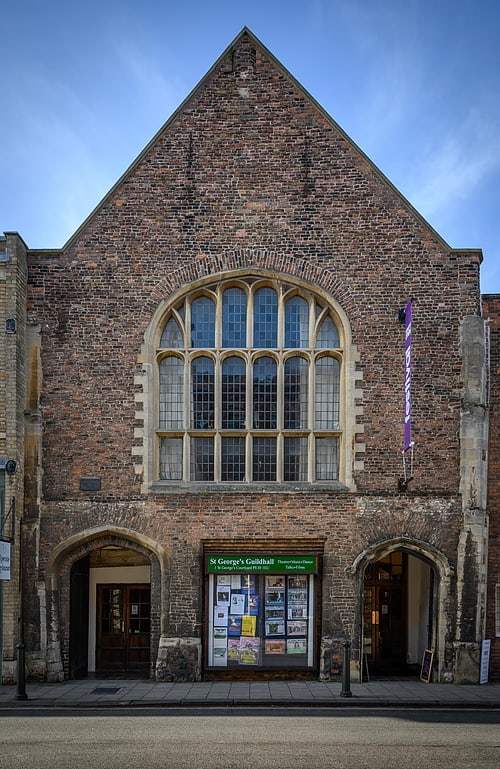
The Guildhall of St George, also known as St George’s Guildhall, is a Grade I listed building in King’s Lynn, Norfolk, England, currently in the ownership of the National Trust. At present it is leased on a long lease by the Borough Council of King's Lynn and West Norfolk for hire by the public as a space for music, performances, lectures and entertainments.
It was built for the Guild of St George, which was founded in 1376.[3]
King's Lynn Minster
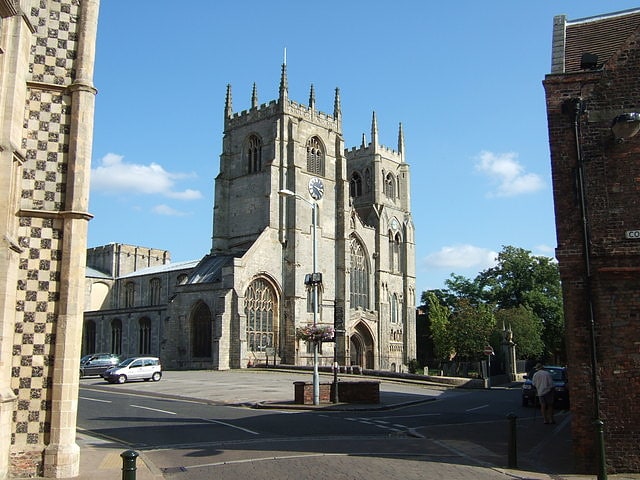
Church in King's Lynn, England. St Margaret's Church, King's Lynn, entitled King's Lynn Minster since 2011, is a Grade I listed parish church in the Church of England in King's Lynn. The building dates from the 12th to 15th centuries, with major restoration of the nave in the 18th century. Five of its ten bells and its organ also date back to the mid-18th century.[4]
Address: Church Street, PE30 5DU King's Lynn
King's Lynn Guildhall
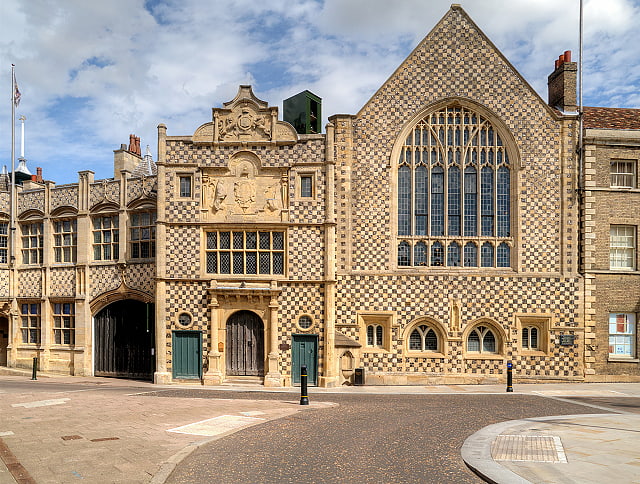
King's Lynn Guildhall, more fully referred to as the Guildhall of the Holy and Undivided Trinity, is a municipal building in King's Lynn, Norfolk. It is a Grade I listed building.[5]
Majestic Cinema
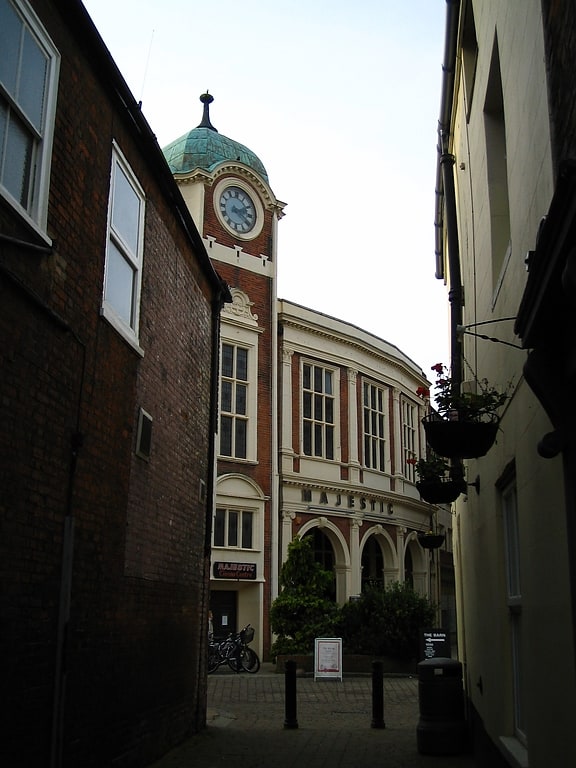
Movie theater in King's Lynn, England. The Majestic Cinema is a cinema in King's Lynn, Norfolk, England.[6]
Address: King's Lynn, Majestic Cinema, Tower Street, King's Lynn, Norfolk, PE30 1EJ
True's Yard Fisherfolk Museum
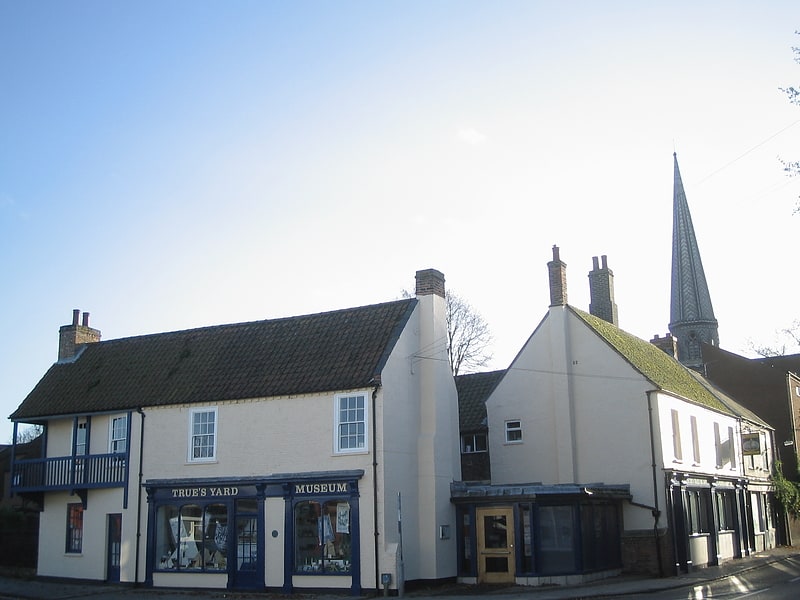
Museum in King's Lynn, England. True’s Yard Fisherfolk Museum is a social history museum in King's Lynn, Norfolk. It is an independent museum run almost entirely by volunteers and depicts the story of the old North End fishing quarter of King's Lynn. Support was received from the late Bernard Matthews and others. Most of the North End was knocked down in the slum clearances of the 1930s and 1960s.[7]
Address: North Street, PE30 1QW King's Lynn
Greyfriars

Greyfriars, King's Lynn was a Franciscan friary in Norfolk, England. The tower, known as Greyfriars Tower survives. It is one of only three surviving Franciscan monastery towers in England and is considered to be the finest. It is a Grade I listed building.
Following the Dissolution of the Monasteries by Henry VIII, the tower at Lynn remained because it was considered to be a useful seamark by sailors entering the town, still being clearly visible on the town's skyline to this day.
The tower is informally referred to as 'the leaning tower of Lynn' as it leans dramatically to the west. At its worst, the lean was 67.5 centimetres - which given its height of more than 28 metres is just over 1 degree. This compares to 3.98 degrees on the Leaning Tower of Pisa.
Although it is not believed to be in imminent danger of collapse, until recently it did require work to correct the lean to ensure it remains a part of the King's Lynn skyline. The tower itself was featured in the first season of the BBC TV series Restoration for the Eastern region. The tower won its regional and proceeded to the national final, which was won by the Victoria Baths in Manchester. This was completed by August 2006 and on 18 October 2006 the grounds were officially opened by the Mayor, Councillor Ann Clery-Fox.[8]
The Walks
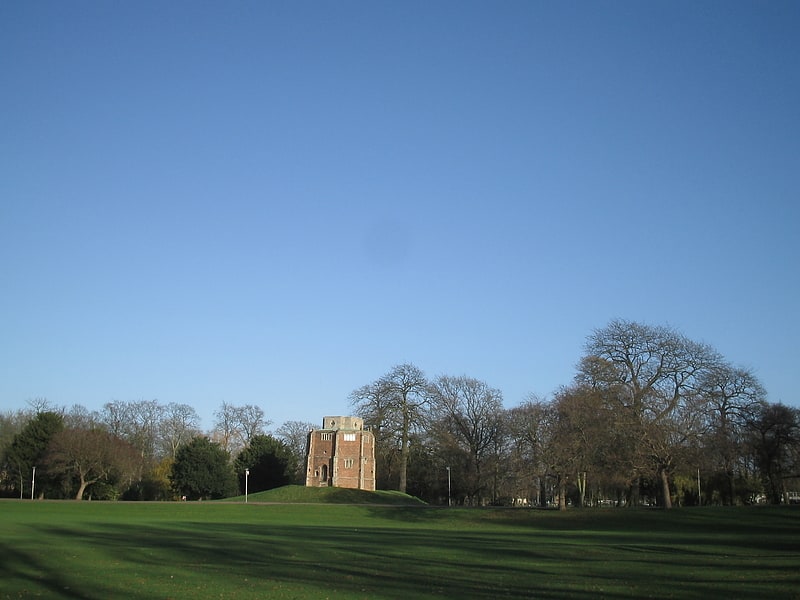
Park in King's Lynn, England. The Walks is the premier urban park in King's Lynn, Norfolk.[9]
Address: South Street, PE30 5EJ King's Lynn
Gaywood
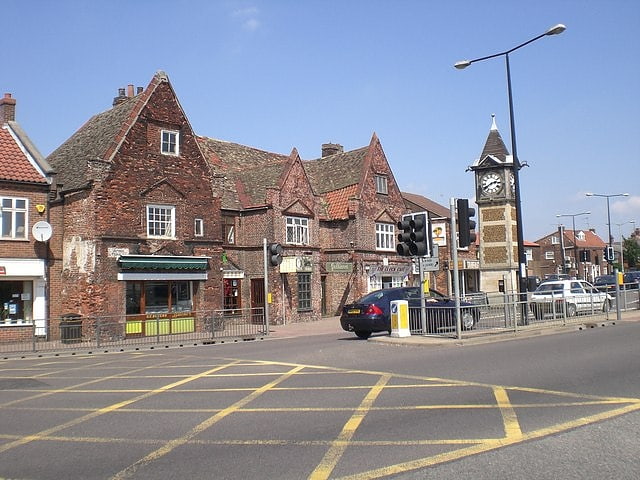
Town in England. Gaywood is an eastern area of the town of King's Lynn, Norfolk, England.
Previously a civil parish in Freebridge Lynn Rural District, Gaywood became part of the borough of King's Lynn in 1935.
Gaywood Hall, the seat of the Bagge baronets in the late nineteenth and early twentieth centuries, was built on the site of a mediaeval palace of a Bishop of Norwich, John de Gray. The house later became part of King's Lynn Technical College.
The church of St Faith is in the Early English style, restored by Walter Caroe in the 1920s; the church is now shared by a partnership of Anglican and Methodist congregations.
According to William White's History, Gazetteer and Directory of Norfolk (1883), Gaywood was in the late 19th century a "considerable village" with a population of 805. The population expanded significantly in the 1960s after King's Lynn became an overflow town for London in 1962 and housing estates were built here and nearby in North and South Wootton. Gaywood is now a suburb of King's Lynn.
There are several schools in the Gaywood area; these include Gaywood Primary School, St Martha's Catholic Primary School, King's Oak Academy (formerly Howard Infant and Nursery School) Howard Junior School, King Edward VII School and King's Lynn Academy (formerly Gaywood Park High School).
The Gaywood area has a wide variety of local shops, including a Tesco supermarket, Aldi store, a launderette, several cafes and various takeaways.
The Gaywood Church Rooms are used as a meeting place for many different groups, including Gaywood Babies and Toddlers Group. It also used to be the home of the Gaywood Methodist Playgroup (established in 1968), but this closed for the final time in July 2016, due to a lack of children attending and ever increasing costs.
The Gaywood Park is a large open area of land which is used for activities such as football, cricket and dog-walking, as well as a weekly Sunday Market and car boot sale. It is also the site of the Gaywood Community Centre, the Gaywood Park Bowls club and the Gayton Road Cemetery, which are all accessible via the unmarked 'Cemetery Drive' road which does not show on any of the online maps for the area.[10]
Westacre Theatre
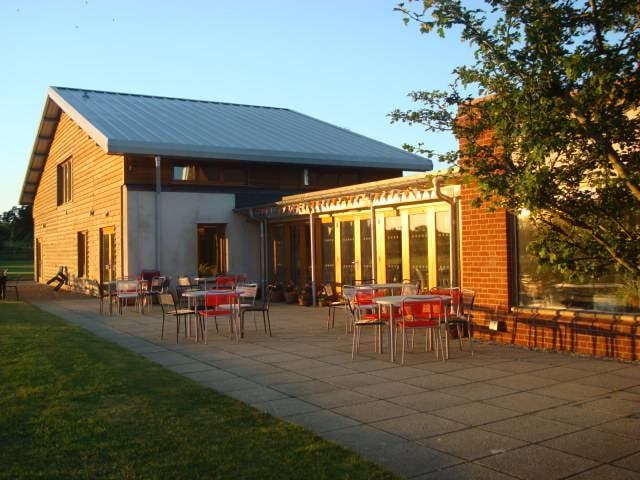
Concerts and shows, Theater
Address: River Road, PE32 1UD King's Lynn